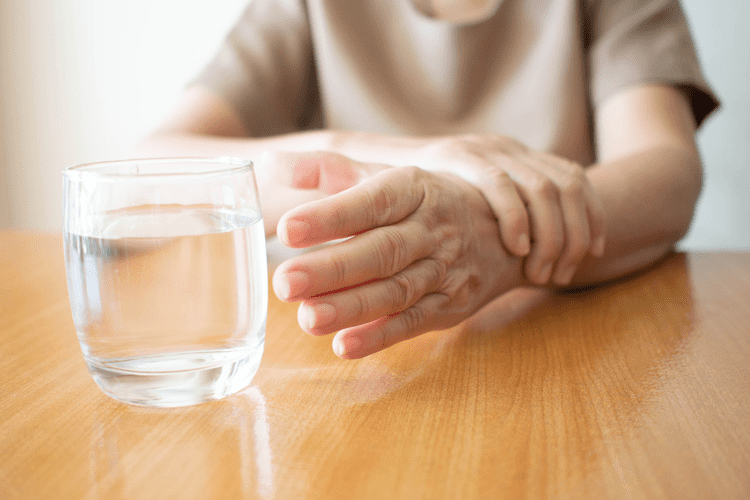Addiction as a brain disease revised: why it still matters, and the need for consilience PMC
Nevertheless, the ability of the brain to adapt to changed circumstances always keeps the door open for the possibility of recovery. Psychological dependence just refers to the way that some people come to emotionally Sober House or mentally rely on a substance. For some folks dealing with both a physical and psychological dependence, the psychological side of things sometimes resolves on its own once the physical dependence is treated.
- These approaches aim to address the social determinants of addiction and create environments that promote healthier behaviors and support recovery.
- It is verylikely that addicted individuals are, at least at times, not fully rational decisionmakers and that their decision making processes are themselves impaired if notdisordered and are therefore a necessary target for intervention.
- The brain adjusts its wiring in response to new inputs, new patterns of thinking, feeling, and behaving.
- The primary purpose would be to provide a meaningful insight, concern, alternative interpretation, clarification, or critical analysis.
Reach your personal and professional goals
- However, it is important to consider the Psychological Model in conjunction with other models of addiction, as a comprehensive understanding of addiction requires the integration of biological, psychological, and social factors.
- Discrepancies lie where molecular and neurochemical changes interrelate with the environmental factors of the individual (O’Brien, 1997).
- There are no substances (or activities) that universally or uniformly cause people to become addicted.
- For example, application of GWAS data has been pursued to investigate the underlying neurobiology of variants and their correlation to cellular processes molecular function (Gelernter and Polimanti, 2021).
- One of the most notable findings of brain imaging studies of addiction is the degree to which, through dopamine pathways, the prefrontal cortex is consistently dysregulated, disempowered in response to activation of the nucleus accumbens by drug cues.
Articles must state whether or not any work was preregistered and, if so, where to access the preregistration. If any aspect of the study is preregistered, include the registry link in the method section note. Preregistration of studies and specific hypotheses can be a useful tool for making strong theoretical claims. Likewise, preregistration of analysis plans can be useful for distinguishing confirmatory and exploratory analyses.
- The present paper is a response to the increasing number of criticisms of the view that addiction is a chronic relapsing brain disease.
- This depends on the recognition that health care inequities and societal barriers are major contributors to the continued high prevalence of substance use disorders, the individual suffering they inflict, and the huge toll that they incur at a societal level.
- Rather, a very complex array of cultural factors, social factors, and situational factors mingle with psychological factors, biological factors, and even personal values to influence the possibility of addiction.
- Maladaptive substance use and substance use disorders are highly prevalent and are among the most significant public health problems.
- Within the growing psychological movement that defines instances of gambling, over-eating, sexual intercourse and gaming as behavioural addictions, neurobiological modifications have coincided with the disorders (Chamberlain et al., 2016).
Psychological Models of Addiction

For example, “compulsive” substance use is not necessarily accompanied by a conscious desire to withhold the behavior, nor is addictive behavior consistently impervious to change. It originates from within the scientific community itself, and asserts that this conceptualization is neither supported by data, nor helpful for people with substance use problems [4,5,6,7,8]. The factors that increase an individual’s risk for addiction are numerous, yet they all find their place in the biopsychosocial model of addiction (Marlatt https://edutechinsider.com/top-5-advantages-of-staying-in-a-sober-living-house/ & Baer, 1988). Taken together, this model provides a holistic conceptualization of addiction that acknowledges the complexity of the disorder and provides guidance toward a solution, which must necessarily be multifaceted and holistic as well. The more we know about the biopsychosocial model, the more we can foster accurate empathy for those with addiction and work toward effective treatment and prevention efforts. Taken together, while multiple theories of addiction exist, many are not mutually exclusive.
A developmental model of addiction
- This model posits that addiction results from an individual’s moral failing or weakness of character.
- This theory differentiates ‘wanting’ a reward from ‘liking’ the reward and highlights the insubstantial contribution of neural adaptations to the latter (Berridge and Robinson, 2016).
- According to this perspective, individuals who struggle with addiction lack self-discipline and willpower, and their addictive behaviors are seen as a result of poor choices and personal irresponsibility.
- In response to repeated use of a highly pleasurable experience—drugs, gambling—neurons adjust their wiring to become increasingly efficient at relaying the underlying signals.
- Traditionally, in many other research themes, in vitro models can be used to allow simplistic and workable investigations (often before progression to in vivo studies).
This article aims to provide an overview of the six main models of addiction, including the Moral, Disease, Psychological, Social, Biopsychosocial, and Spiritual models. Reasonable debate stems from the belief that animal models fundamentally fail in replicating the complexities of an addicted human brain (Everitt et al., 2017). For example, application of GWAS data has been pursued to investigate the underlying neurobiology of variants and their correlation to cellular processes molecular function (Gelernter and Polimanti, 2021). Integration of genomics and neurobiology has contributed to a new ‘Genetically Informed Neurobiology of Addiction (GINA)’ model.
Addiction as a brain disease revised: why it still matters, and the need for consilience
Attachment- and mentalization-based interventions have gained popularity as effective treatments for patients with SUDs (e.g., Dawe, Harnett, Staiger, & Dadds, 2000; Söderström & Skarderud, 2009; Suchman, DeCoste, Castiglioni, Legow, & Mayes, 2008). These interventions are effective in improving emotional bonds, maternal reflective functioning skills, and mother-infant interactions so as to reduce the likelihood of addiction and maladaptive attachment styles in future generations (Pajulo & Kalland, 2013; Suchman, et al., 2008, 2011, 2013). It is important to acknowledge that no single model can fully explain or address all aspects of addiction, as each individual’s experience of addiction is unique and shaped by various biological, psychological, social, and spiritual factors.

Many models of addiction highlight the causative role of individual psychological factors, whether personality factors such as impulsiveness or sensation-seeking, or psychopathology such as the negative effects of early trauma. Other models of addiction emphasize the role that social and economic factors play in shaping behavior, such as the strength of family and peer relationships and the presence of absence of educational and employment opportunities. Given the emphasis on the interaction of biological, psychological, and social factors within the Biopsychosocial Model, treatment approaches informed by this model often involve a combination of pharmacological, psychotherapeutic, and community-based interventions. The goal of these treatments is to address the multiple dimensions of addiction and provide a comprehensive and personalized approach to care. Additional advantages come from comparisons of IPSCs from healthy versus addicted patients. This allows us to investigate neuroadaptations conclusively and permits investigation into genetic susceptibility or specific allele variation for investigation of both genetic and brain disease theories (Sheng et al., 2016).
People regain the ability to respond to more natural rewards, setting the stage for psychological growth. Addiction brings about changes in the brain, but those changes do not reflect a pathological process. The pathways to addiction can be difficult to understand, because substance abuse, as a result of the intense burst of pleasure it brings, rapidly rewires the circuitry of the brain to become highly efficient at drug wanting and seeking. But, unlike in disease, the brain changes that occur in addiction are not a malfunction of biology.
However, it is important to consider the Disease Model in conjunction with other models of addiction, as a comprehensive understanding of addiction requires the integration of biological, psychological, and social factors. Given the aforementioned commonalities amongst neurobiological and psychodynamic accounts of addiction, can we synergistically bring these approaches together to further understand the nature of addiction to optimize intervention and prevention efforts? Consistent with this notion, high rates of comorbidity between SUDs, trauma histories, and psychiatric disorders have been reported (Espinosa, Beckwith, Howard, Tyler, & Swanson, 2001; Milby, Sims, Khuder, Schumacher, & Huggins, 1996; Suchman & Luthar, 2000).

Studies have shown that individuals with substance use disorders are more likely to have co-occurring mental health disorders, such as depression, anxiety, and post-traumatic stress disorder (PTSD). Furthermore, it has been demonstrated that experiencing trauma or significant life stressors can increase an individual’s vulnerability to addiction. Treatment approaches informed by the Disease Model often involve a combination of pharmacological and behavioral therapies, as well as peer support and community-based resources.

Deja una respuesta
Lo siento, debes estar conectado para publicar un comentario.